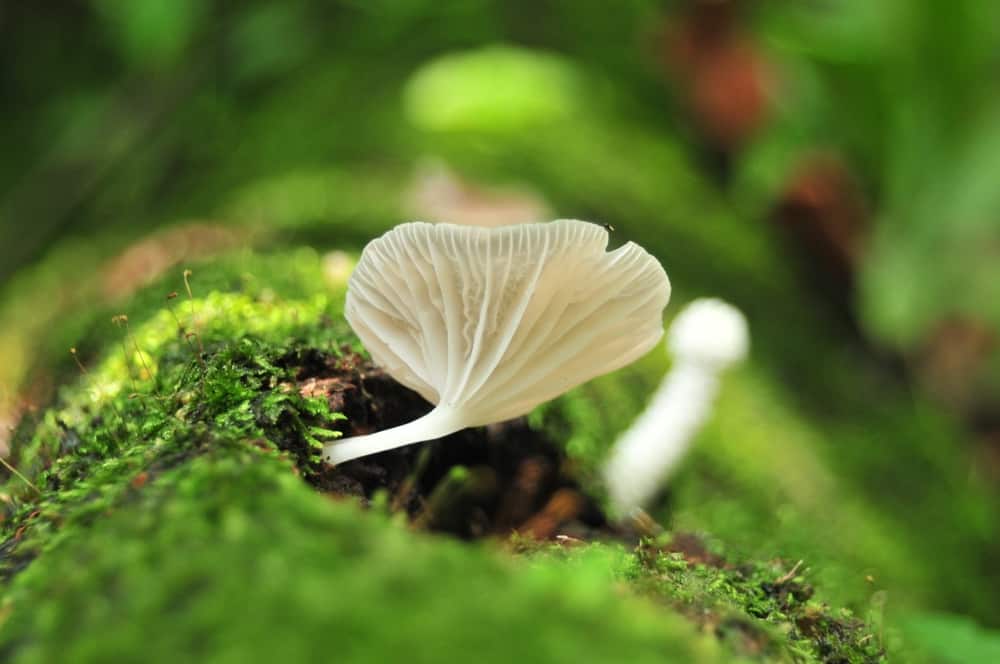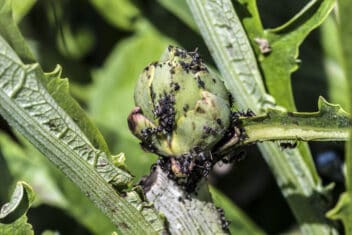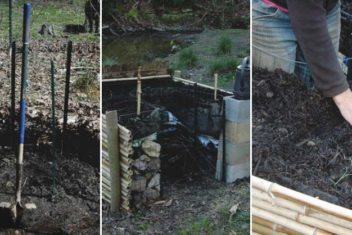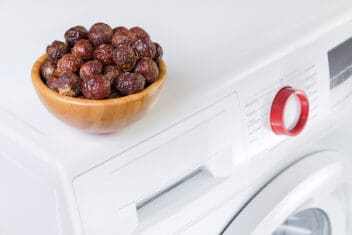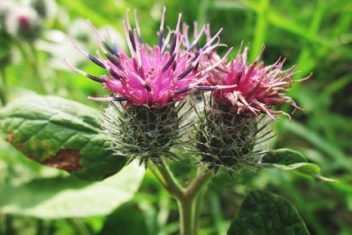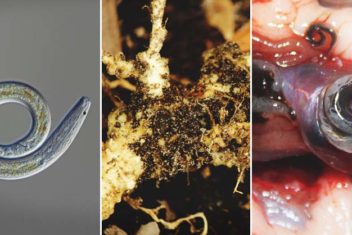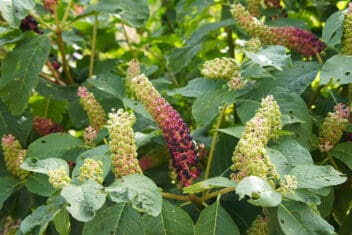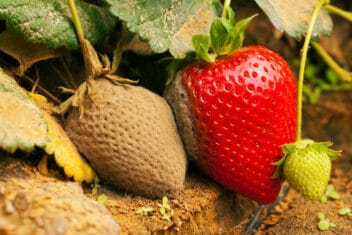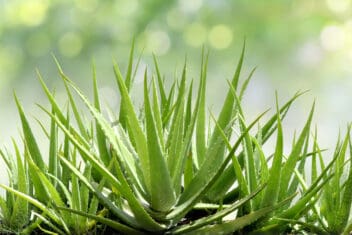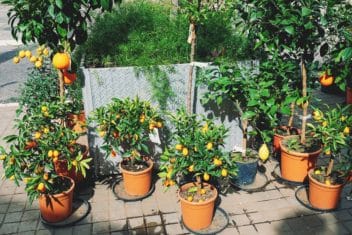We’ve all come across mushrooms popping up in the garden and mushrooms in the lawn. Maybe you’ve wondered: where did they come from? And are they a problem? Should I get rid of them or leave them be?
The answer isn’t straightforward.
Some species are harmless, for instance, and offer a touch of whimsy in your garden. Others can be deadly if ingested.
Mushrooms can also be a sign of overwatering or too much organic matter. Or they can simply be a sign that your garden is healthy, thriving, and balanced.
Why Are Mushrooms Growing in My Garden?
Some people love the sight of mushrooms in the lawn or garden. Others worry about why mushrooms are suddenly growing where they weren’t before. Generally, the presence of mushrooms means that your garden is healthy and harmonious.
The most probable cause for mushrooms growing in your garden is that the weather has been wet. Fungi love moist environments.
Their next requirement is lots of organic matter. That’s why you’ll probably spot mushrooms on the bark of old trees and in areas with lots of compost.
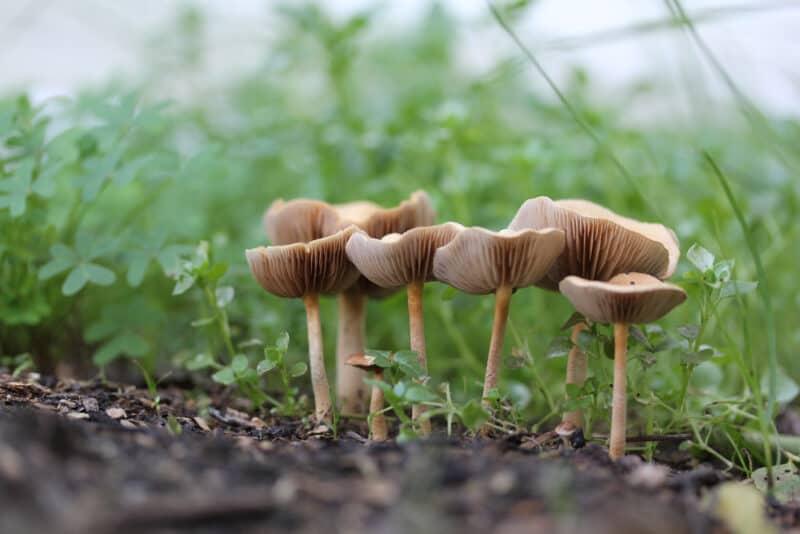
Mushrooms spread via tiny spores that travel through the air to germinate in their ideal location. Once a spore lands, it starts to develop underground roots before sending up the fruiting bodies, which we know as mushrooms.
Sometimes, the fungi can stay underground for a long time before they sprout. If you pull the mushrooms, you won’t kill the underground parts, so they can quickly return when conditions are right.
When summer comes around, the mushrooms often go dormant and won’t come back until the rains return.
So, mushrooms in the lawn or garden simply mean that the conditions are right for mushrooms to thrive. In other words, it’s moist, and there is a lot of organic matter. That’s usually a good thing.
The exception is if your garden is overly wet for the plants you’re growing. Maybe a sprinkler broke underground, or the ground has become compacted and poor draining, allowing moisture to collect.
Think of mushrooms as a sign that there is a lot of moisture around. If it has been rainy, that’s totally normal. But if you have a patch of mushrooms in the middle of summer when it hasn’t rained for months, look around to determine why the ground is so moist.
Common Species of Garden Mushrooms
For the most part, you can just leave mushrooms in the lawn or garden alone. But there might be times where you’ll want to remove them. If you have deadly mushrooms growing in your garden and you have curious pets or kids, definitely pull them.
Remember, you should never eat or use a mushroom that you aren’t 100% sure you can identify. We can’t emphasize that enough. Even if these garden mushrooms are harmless, that doesn’t mean they’re edible.
Here are some common garden mushrooms to help you figure out what you’re dealing with and if you should worry. You might want to keep a nature journal to record your sightings of various species.
Ringless Honey Mushroom

Ringless honey mushrooms (Desarmillaria caespitosa) grow on tree trunks, especially oak trees, where they are commonly found in home gardens. They have a distinct golden cap that stands out against a patch of green grass and tree branches.
As the mushroom ages, the margins lift.
Ringless honey mushrooms can cause oak or Armillaria root rot, which is devastating to trees. Once a tree is infected, it will die, though it can take many years.
Meadow Mushroom
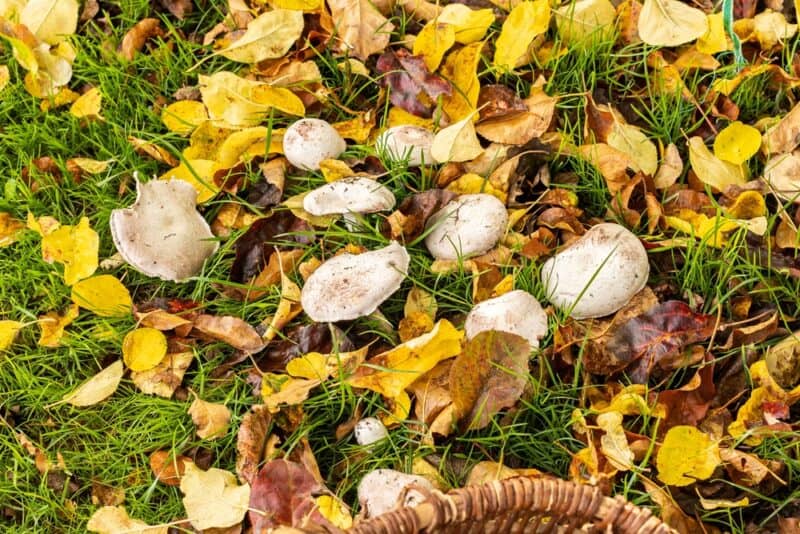
Meadow mushrooms (Agaricus campestris) are a common variety of fungi people find in their gardens. Despite their name, you can find meadow mushrooms in the lawn and gardens.
They have brown or grayish-white caps with pink or brown gills. The most common time to spot meadow mushrooms is in summer. This mushroom isn’t dangerous, so you can allow them to keep growing if you want.
Lawyer’s Wig
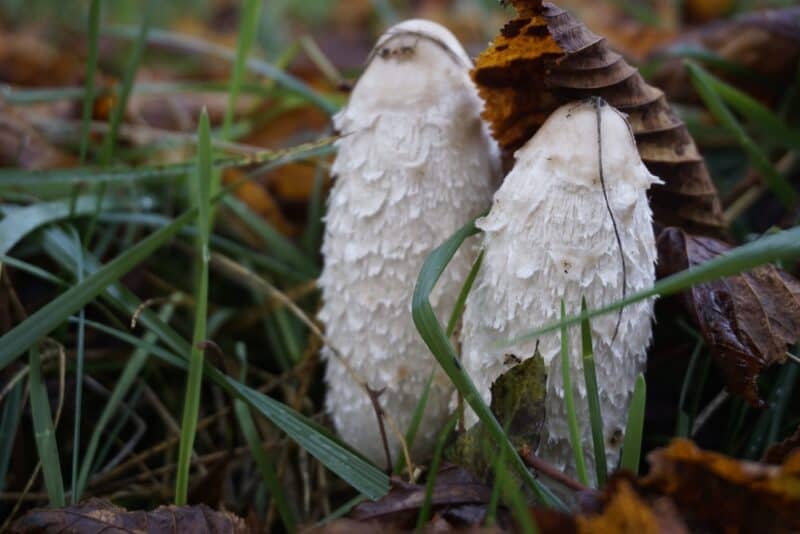
Lawyer’s wig mushrooms (Coprinus comatus) like to hide, making them harder to find. Once you see them, they’re instantly recognizable. These mushrooms start as long and narrow with a shaggy cap. Then, they start to shrivel from the bottom up.
You’ll know the mushroom is ready to release spores when it turns black. You don’t need to remove these mushrooms, but you can clear them away if you don’t want them in your garden.
Shaggy caps, as they’re also known, are edible. But they have several dangerous lookalikes, so don’t even think of eating them unless you know exactly what you’re dealing with. Many people are poisoned each year, thinking they’re eating this mushroom.
Fairy Ring Mushrooms
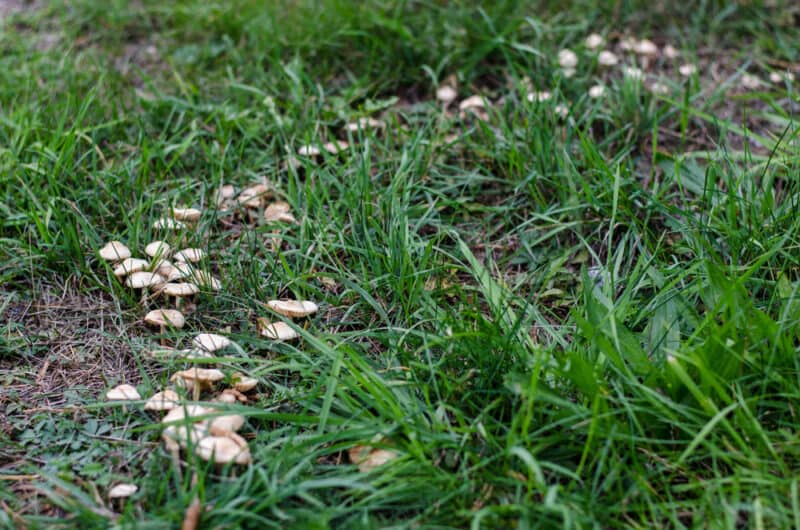
We often see fairy ring mushrooms (Marasmius oreades) in fantasy folklore. Fairy rings predict good fortune, and stories depict little faeries dancing inside the circle and resting on the toadstools.
Seeing a fairy ring in your garden might make you feel you’re in a fairytale!
Typically fairy ring mushrooms pop up in moist and nutrient-rich lawns that accommodate their climate needs. You can keep fairy ring mushrooms in your garden.
Just keep in mind that many mushrooms grow in a circular pattern. That doesn’t mean they’re M. oreades. Poisonous mushrooms like Chlorophyllum molybdites grow in a circle, too.
Destroying Angel
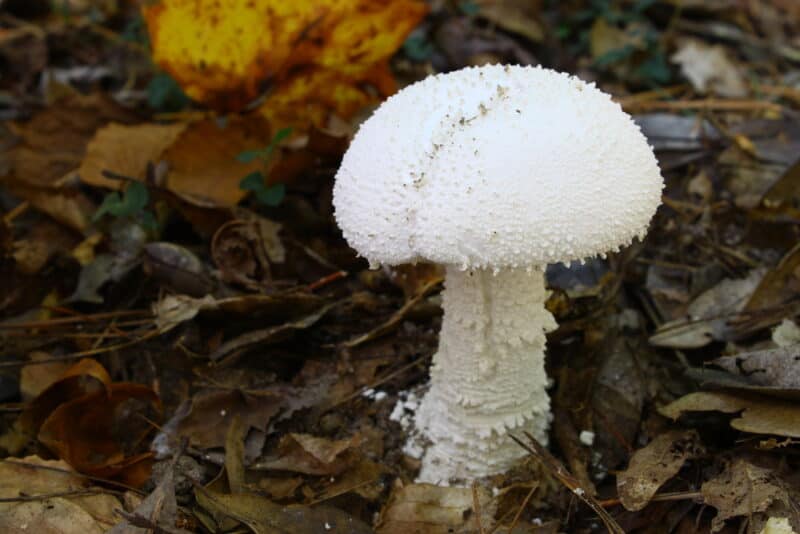
The name destroying angel (Amanita bisporigera) says it all. You need to remove these bright white mushrooms if you find them in your garden. They can be found near trees and grow 4-10 inches tall.
Consuming these mushrooms can be lethal, as they contain toxic elements to people and animals. When ti comes to mushrooms in the lawn and garden, this is one you definitely don’t want around.
Fly Agaric
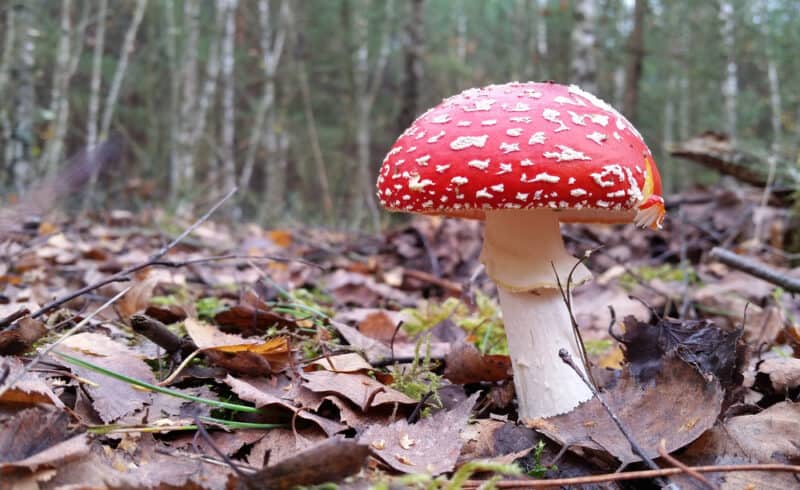
Another poisonous mushroom to watch out for is fly agaric (Amanita muscaria). This type of mushroom is instantly recognizable as it has a large red or yellow cap with white spots. It looks like a perfect fairytale mushroom, but it’s poisonous and hallucinogenic.
Although some people eat these mushrooms after removing the toxins, eating them is not advised as they can be deadly. Leave it to the experts. It’s best to clear these mushrooms in the lawn or garden right away if you have curious mouths around.
False Parasol

Vomiter or false parasol mushrooms, also known as green lepiota and false parasol (Chlorophyllum molybdites), are poisonous to humans and animals.
You can mistake vomiter mushrooms for lawyer’s wig mushrooms as they have a similar appearance. Look for pink or brown rings on the cap. At first, these mushrooms are white and change to greenish gray.
In wet weather, they grow 2-10 inches, making them easier to spot.
What Is a Toadstool?
When researching mushrooms, you might hear about toadstools. There is no official definition, but some people use the term “toadstool” to refer to toxic mushrooms and the term “mushroom” to describe edible varieties of fungi.
How to Get Rid of Mushrooms in the Garden
If you stumble across mushrooms in your garden you want to remove, it’s essential to do it correctly, or the fungi will sprout back and you’ll need to deal with them again. Mushrooms grow quickly, so you must act fast.
Here are the main things to focus on when clearing up mushrooms:
- Lawn drainage
- Presence of organic matter
- When you water
- Fertilizer use
The first step is to try and change the environment to discourage mushroom growth.
Work to ensure that moisture isn’t pooling in your lawn or garden. That might mean changing up your irrigation or improving drainage. If you haven’t aerated recently, now is the time.
You should also take care not to over-mulch or over-compost your garden. Water in the morning so your plants have time to dry out. Be sure not to over-fertilize and dethatch your lawn if needed.
Improve access to sunlight, if possible. Most mushrooms thrive in shady areas and will die when exposed to sunshine.
Next, it’s time to remove existing mushrooms. Of course, the removal choice will vary if you want to avoid chemicals or would instead apply a fungicide immediately.
Fungicide
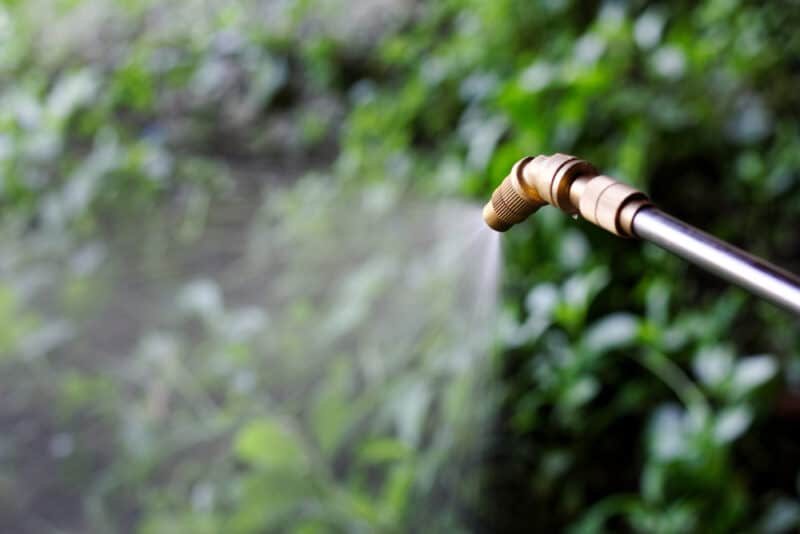
A fungicide is the quickest way to kill the fungi growing underneath the soil. There are fungicides made to kill mushrooms in the lawn or those more targeted for gardens. Fungicides come in granules or sprays.
Follow the manufacturer’s directions closely to protect loved one’s from harm when applying the product.
The nice thing about a fungicide is that it kills the roots underground, whereas pulling a mushroom only removes the fruiting body.
Natural Removal Alternatives
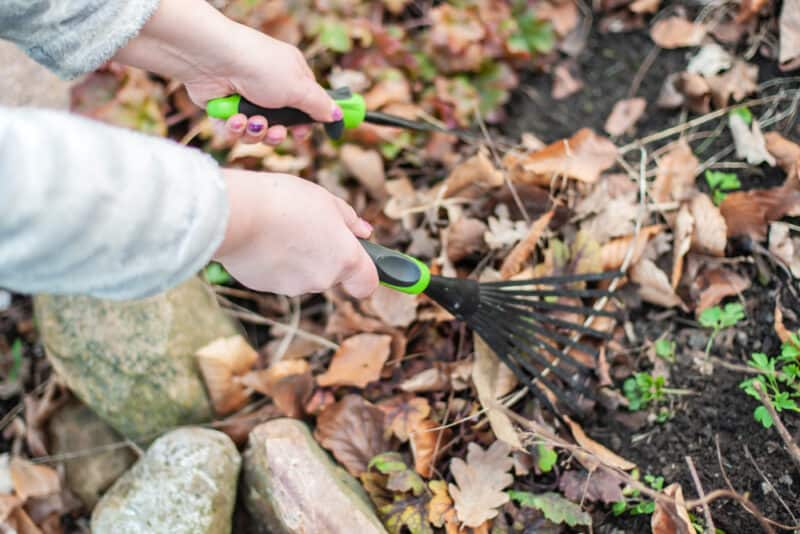
If you prefer to use natural solutions, there are many chemical-free methods to choose from. Start by removing dead organic matter from your garden.
Clear away rotten tree stumps, animal waste, and grass clippings. All these things can lead to moisture building up and leftover water.
Next, dig up any mushrooms using a shovel. You might need to replace the removed soil with fresh, clean soil. Place the mushrooms in a bag immediately to prevent them from spreading their spores.
Spray the area where you removed the mushrooms with diluted dish soap to neutralize the spores left behind.
Horticultural vinegar can kill mushrooms when applied regularly.
